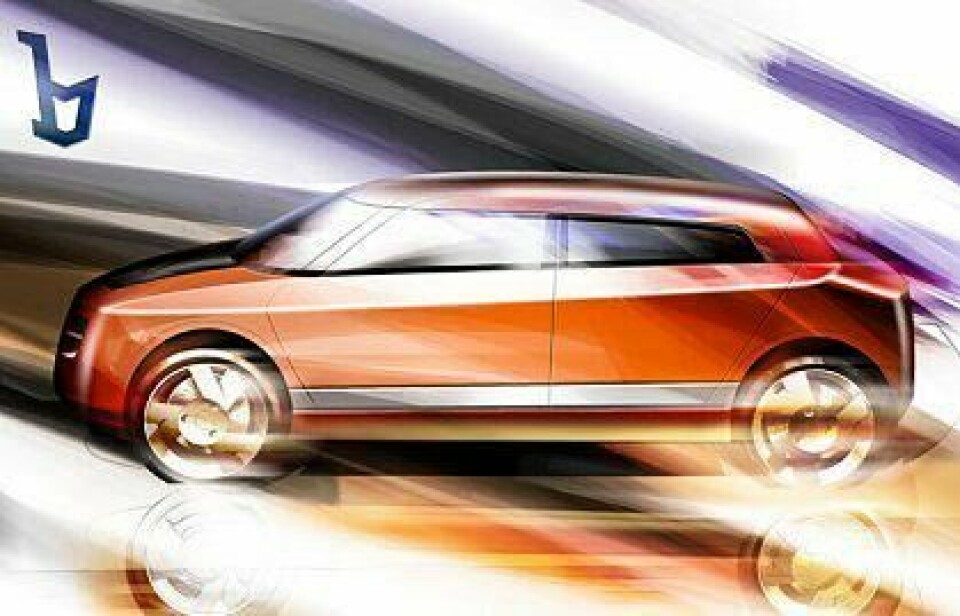
Concept Car of the Week: Bertone Saab Novanta (2002)
Italian firm’s 90th birthday present to itself, via Sweden
In 2002, Italian design house Bertone celebrated its 90th anniversary. It was expected to mark the occasion by creating one of the futuristic supercars for which it was perhaps best known, but instead surprised many with the Saab Novanta, a car that explored the future of the executive sedan.

Introduced at the Geneva motor show, the Novanta was based on the Swedish firm’s wholly conventional 9-5. But, rather than stick with that car’s traditional three-box sedan format, the Novanta is perhaps best described as a two-a-half box with a large central volume that stretched to the centre of each axle, with a compact notchback as a nod to its roots.

Saab itself was in explorative mood, with a series of concept cars, starting with the sublime 9X, that suggested that this long-neglected brand was finally receiving the attention and investment it had been starved of under General Motors’ ownership.
But while the Novanta, 9X and 9-3X all explored the possibilities of utility, the in-house designs erred towards soft forms. Bertone’s take was far more architectural in its construction, with sheer surfaces with sharp intersections, and broad, parabolic sweeps for major volumes. The rear aspect was especially architectural, the deck dropping almost vertically to form a broad rear fascia. Vertical lamp assemblies indexed with slim exhausts, integrated in a chrome trim strip. The lamps themselves were projected onto the surfaces like backlit columns.

But within what sounds like a very staid, pragmatic design lives the spirit of Bertone’s exotic greats. The wraparound ‘shield’ window graphic that tapers towards the C-pillar, rising bodyside, broad shoulders created by an inboard upper body and the kick-down of the truncated tail all reference Marcello Gandini’s Lancia Stratos.
Even the satin orange paint echoes the 1971 Stratos prototype (not to be confused with the Stratos Zero of a year earlier). Its wheels, meanwhile, tip their metaphorical hats to the giant screw-head items fitted to Gandini’s wonderfully brown Lancia Sibilo concept.

But while many references may be to the past, the technologies that inspired the Novanta’s architectural rethink were white hot.
This was the same year General Motors showed its GM Autonomy ‘skateboard’ that promised to revolutionise how cars were constructed by placing all mechanical components in a flat chassis, freeing up designers to create whatever they liked to sit on top. The major breakthrough was by-wire technology, particularly for steering. Without the need for a physical connection to the front wheels, new worlds were imagined. Bertone took the idea of by-wire – which seemed appropriate for a company steeped in aerospace history – in order to reimagine interior packaging and, hence, exterior proportions.

Access to the interior was gained through any of three doors – one on the driver’s side and two on the opposite side. The interior sat four adults in angular seats that appeared to be designed as much for graphic and sculptural effect rather than ergonomics. In the place of a traditional transmission tunnel and console, a luminous orange strip arched between the front seat, diving into the floor before rising up between the rear seats. This strip, besides providing interior lighting, also displayed information from driving and navigational aids, as well as audio and climate control.

But it was from the driver’s seat that the Novanta found its true distinction. In place of a traditional steering wheel, a total vehicular control device, known as a Guida, held the steering, throttle, braking and transmission controls in one unit.
The Guida folded into the driver’s door panel when the vehicle was parked, and extended on an arm when the car was engaged for driving. Two yokes for the hands surrounded a central hub that contained multiple controls, as well as a dock for a Nokia Communicator cell phone (with tiny keyboard) that allowed customisation of the driver’s controls, interior climate preferences and seat configuration. The phone also doubled as a key for the car, working in tandem with an on-board biometric sensor in a centrally located unit in the centre of what would have been the IP but was, in fact, the firewall.

The Guida was an attempt to “open a new perspective in the relationship between man and machine”, according to Bertone. Its purpose, beyond the central control of the car, was to minimise the barriers between driver and car, allowing for a kind of personalisation that would soon be found in smartphones. The car as an extension of one’s self has a long history, but the Novanta attempted to integrate the two more fully than ever before.

Of course, the Guida would not have been possible without several high-tech features. Besides the Nokia phone and dock, the Novanta employed an advanced drive-by-wire system designed by SKF, an innovative braking system by Brembo, and advanced electric system with 42 volt alternator just to power the Guida unit. Drive-by-wire actuators fed their data into a system-wide control unit that monitored all vehicle functions to assure proper control and safety.

Looking back from 2016, it’s easy to see that many of the technical features, and the challenges they represented, previewed the connected car issues of a decade later. Some technologies, like drive-by-wire, are increasingly common in today’s cars. As for the Novanta itself, it was placed in Bertone’s private collection and, sadly, auctioned in 2015 as part of an asset liquidation scheme required by the company’s bankruptcy.
Neither Bertone nor Saab remain part of our automotive landscape.




